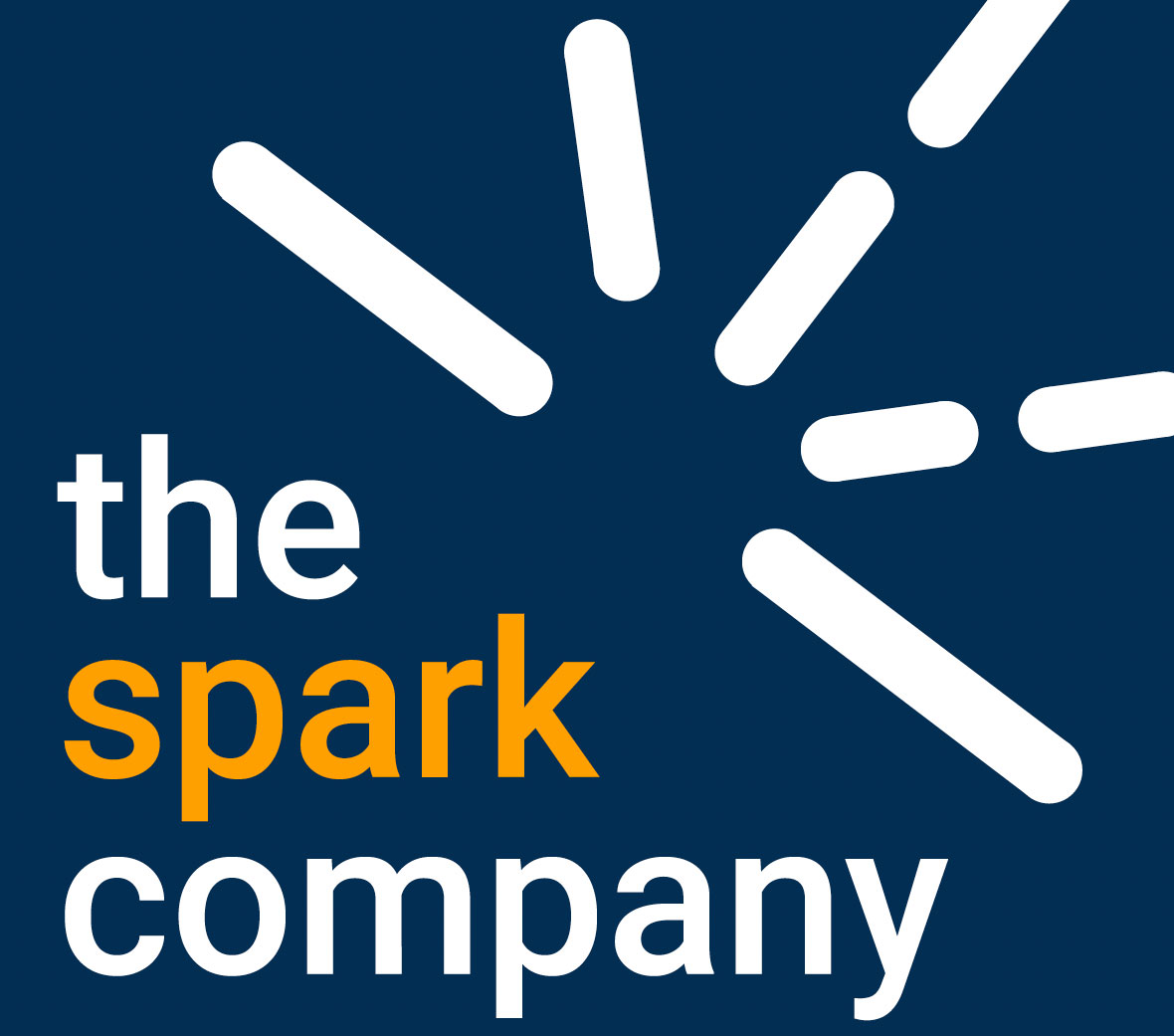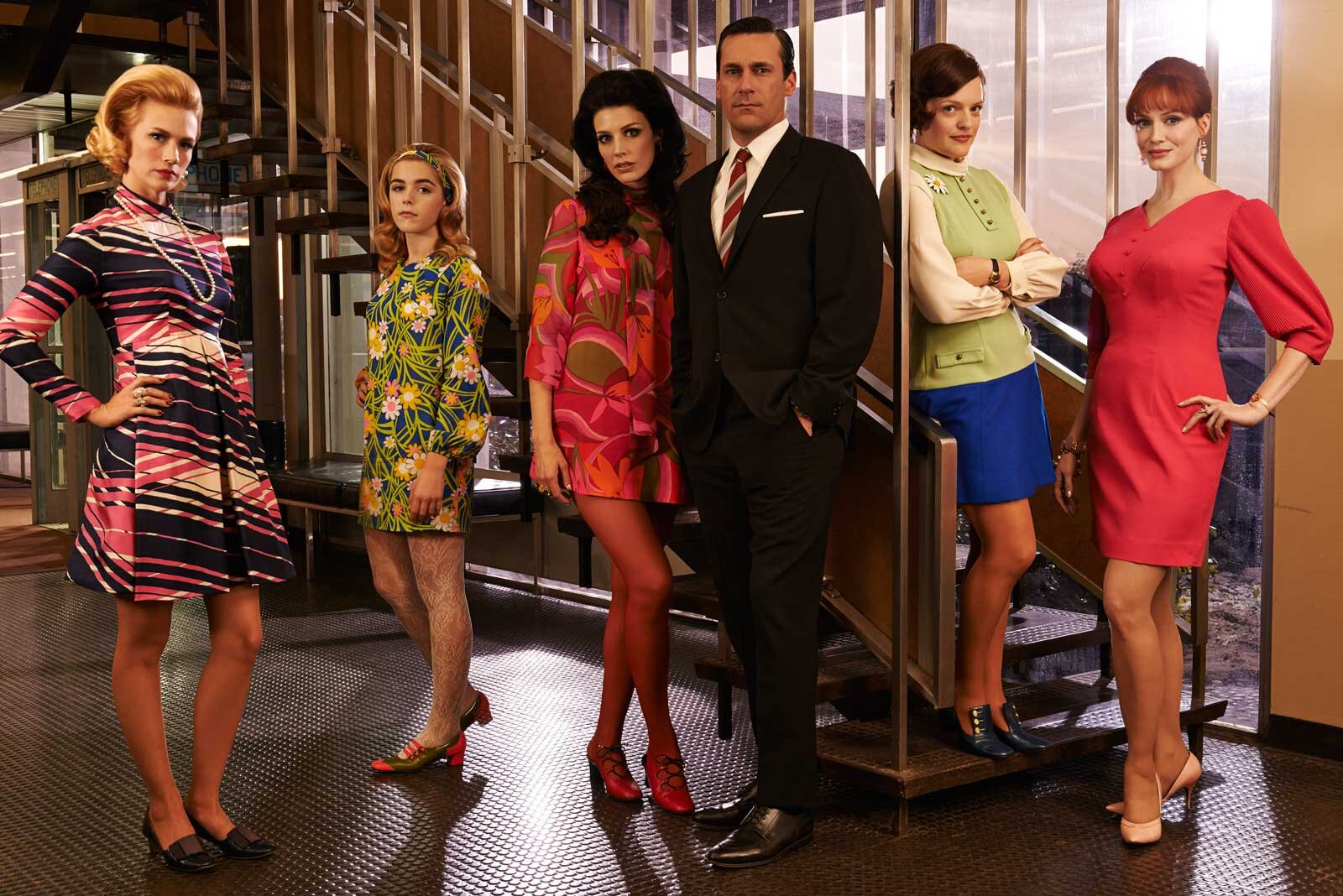Business partners are strategic thinkers, who nurture talent and get things done. In HR they can improve people management, reduce pointless admin and get the team firing on all cylinders. They see through internal teams, to focus on bigger business goals, helping create better synergy between everyday work and big-picture company ambitions. Business partnering was designed by Dave Ulrich almost 30 years ago, to help join up organisational strategy, workplace culture and business objectives. The model creates people solutions that deliver better commercial results.
How do HR Business Partners (HRBPs) work? It varies depending on the business, but there are two common models of HRBP, explored in detail by the CIPD in their Business Partnering Factsheet, but in brief:
Standalone HR Business Partners – aligned to a specific business unit The CIPD defines this role as “the focus of the relationship between HR and L&D and the business, ensuring HR and L&D are aligned effectively with the teams and individuals they support. BPs are facilitators and business consultants, ensuring that the HR value proposition is both relevant and effective.
Three-pronged HRBP model – where the HR service runs across three areas of expertise: Shared Services – A centralised group handling transactional services across the organisation, such as payroll, sickness, recruitment and administrative HR support. Centres of Excellence – Small specialist HR teams, delivering business and people benefits. They tend to manage work around innovation, learning, reward, employee engagement as well as nurturing talent. Strategic Business Partners – Experienced people professionals who work closely with leaders. Embedded in business units, influencing, steering and implementing business and people strategy.
What does a good Business Partner look like? Business partnering is skilled role that needs a mix of experience, values, capability and knowledge. It’s not suited to everyone. I’ve seen HR Business Partnering done differently in many organisations and every successful HRBP has a unique set of skills, knowledge and experience.
Business Partner Skills There are some specific skills that elevate fantastic HRBPs way above the mediocre. A top level HRBP will be able to: Quickly establish positive working relationships that deepen over time. Work closely with business leaders and/or line managers. Lead on complex HR projects with credibility. Be change-makers – oozing business culture & values, to shape influence and inspire change.
Business Partner Knowledge A good HRBP needs to know what they’re talking about and be able to communicate their expertise to others with passion and flair. They will be: Embedded in the business, a person ‘in the know’. Able to use the tools of the trade – models that support change and organisational design, employee engagement tools and other strategic ‘instruments’. Steering and implementing business and people strategy.
Business Partner Experience An effective HRBP has credibility. It’s not a role well suited to ambition without experience. It works best when a person is: A senior and/or experienced people professional, who may have held a leadership role in the past. A confident generalist although they may have specialised in the past. Familiar with navigating complex people situations, everything from changes and reorganisation to the most challenging grievances, disciplinaries and performance issues.
How do I know if HR Business Partners would work in my organisation? It doesn’t work in every organisation, it’s not a model that can be bolted on to a very old-fashioned way of managing people. You need a certain amount of infrastructure and systems in place already for it to work and you need to work at it once you’ve introduced the model.
Four key questions you can ask yourself to find out if HR Business Partners could transform your organisation… As it’s not a simple ‘yes’ or ‘no’, we’ve helpfully devised four key questions you can ask yourself to figure out whether an HRBP model could benefit your business.
This matters because HR need to know how to help teams internally deliver what customers want. True HR business partnering is about enabling your people to achieve their goals and serve your customers better.
This is crucial. If your HR Team is not represented at the top level of your business then they’ll never have the opportunity to make the kind of strategic impact you’re going to need. In large organisations this means a Chief People Officer or HR Director on the Exec Team or Board. In smaller organisations this means a Head of HR or Business Partner reporting directly to either the Chief Executive or Managing Director, or one of the directors of your business.
This matters because good HR is about evidence-based practice and measuring the impact of our work. As the old saying goes ‘what gets measured gets done’.
Wait…what…of course I do! This question matters because there’s nothing worse than introducing a modern and mature approach to people management in your organisation, if it’s not aligned with the way you do things.
How did you do…? If you answered mostly postively, then congratulations, it’s likely that a HR Business Partnering model will work for you! If you answered mostly negatively, then you probably aren’t ready to introduce HR Business Partnering just yet… but don’t despair, you can get there.
In a nutshell, if you don’t have a HR Business Partnering model, you’re probably missing out… As The biggest benefit of the HRBP is to create solid connections between your people and your business goals, making sure that all people activities in your business link with what the customer needs. In short, if a ‘people task’ doesn’t help you achieve your business goals, then don’t do it.
I know that HR can sometimes seem like a dark art and the thought of changing to a different way of working can feel overwhelming. I love working with Exec Teams to improve performance and unleash the potential of their organisations. Who knows what you might achieve? Give me a call if you want to delve further and explore how a HRBP model could work for you.
Images sourced from Canva Pro and are photographers are not individually credited. If you see one of your photos above, please let us know so we can credit you here. Photo of Andrew Knight by Nick Morrish from Nick Morrish Photography
HR Business Partners create solutions that get you better results

HR Business Partners work closely with leaders to implement business strategy

A top-notch HRBP helps leaders to navigate complexity and change

Making HR Business Partnering work for you will take time, effort and resources

The best HRBPs transform organisational performance and productivity
Question 1 – Do I have a clear business strategy or some form of business plan with tangible outcomes, objectives or goals?
Question 2 – Do HR have a seat at the table in top-level decision making?
Question 3 – Do I have the infrastructure to produce good (read that as reliable) data about my people?
Question 4 – Do I care about our high levels of engagement, wellbeing and team morale?
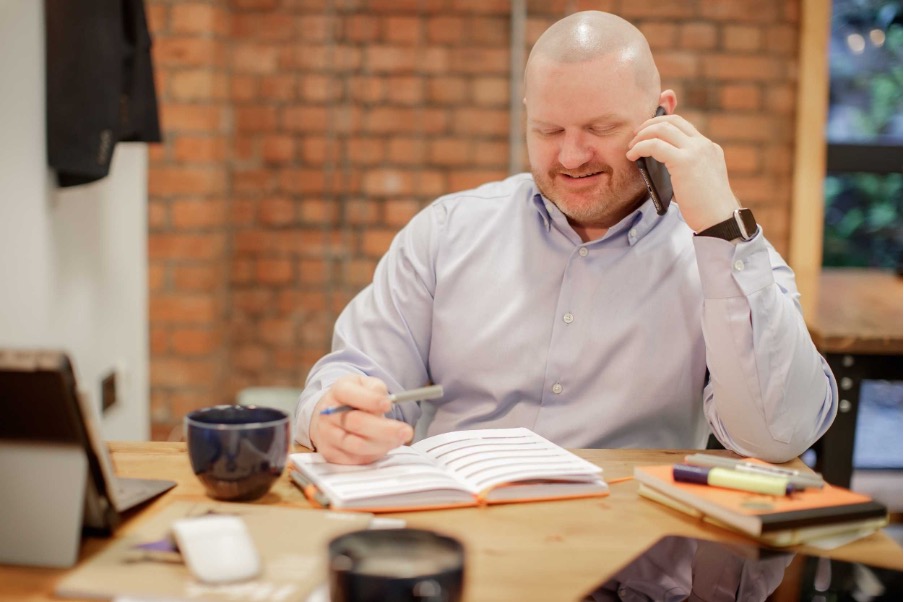
Don’t know where to start?
Image credits
Tag: People Function
Does your HR team make things easier or are they getting in the way?
We’ve talked a lot recently about how to spot when things aren’t going well. We’ve covered cultural blindspots, festering grievances and ineffective organisational structures.
In lots of cases these problems emerge because those in charge of managing HR are distracted by other stuff!
From holiday pay and recruitment challenges through to furlough – a busy HR team often gets bogged down with no time to see the big picture. It doesn’t have to be this way!
Changes to company infrastructure and HR systems could revolutionise the capacity of your HR team and make it easier for your organisation to get things done. After all, most (if not all) HR people want to do the best for you, your teams and your customers.
Our job as HR practitioners is to enable you to achieve your goals and objectives
Great. But what are HR doing, whilst I’m doing all the people stuff?

This might come as a bit of a shock, but virtually all day-to-day people management decisions should sit with line managers, not HR.
This means everything from 1:1s, performance coaching, recognising achievements, managing attendance, and so on…
Organisations that manage people through a centralised HR department are outdated and often not resourced effectively. Gone are the days of HR making decisions for managers or telling managers what to do.
In modern organisations, it’s HR that enables and managers that manage

It makes more sense for teams to be given the skills and flexibility to manage their people properly.
If you can achieve this, then your HR team will have the time and space to make your organisation function better. There are four things they can do to achieve this (Ulrich model):
Be a Strategic Partner
-
This is about the alignment of HR activities and initiatives with your business aims and strategy.
-
Strategic partners see beyond the internal function of HR to consider the customer and how best to organise the business to serve their needs.
-
It’s usually a job for HR Directors and HR Business Partners.
Be a Change Agent
-
An HR team can be instrumental in supporting change that helps the business to achieve its aims.
-
It’s not about restructuring for the sake of it.
-
The role of HR is to be an expert and trusted adviser, and driver of change activities.
-
They should also be able to understand the future skills and talent needed to make any organisational changes a success.
Be an Employee Champion
-
Being an employee champion is about doing the best for colleagues, leaders, and customers, it shouldn’t be confused with formal advocacy or trade union activity.
-
Good leadership, clear brand values and a solid organisational moral compass will nurture authentic employee champions.
-
These people are crucial and act as the conscience of the business, taking care of people at all levels equally, and prioritising ethical and fair business practices.
Be an Administrative Expert
-
We don’t mean the world’s fastest touch-typist!
-
In the past HR was about writing letters and documents for managers as they ‘couldn’t be trusted’ to do it themselves.
-
These days it’s about creating efficient administrative systems, providing user-friendly templates for managers to personalise and most of all, maintaining excellent HR technology that enables people.
-
In short, this is where HR can and should, get out of your way.
HR falls down when we focus on one role and not excellence in all areas

How are HR using technology to manage and enable people?
Knowing when to automate processes and when the human touch is still needed, is a key skill for HR leaders.
We all expect on-demand and instant service, from banking apps to self-service tills in stores, HR is no different.
Our colleagues expect to be able to easily make holiday bookings, record appraisal ratings and access their data at the touch of a button.
An HR team that’s nailed being an ‘administrative expert’ will be creating, maintaining, and evolving systems, tools, and technology to serve you better. Remember, a system with even a minimal level of automation can save hours of wasted time and admin that does not add value, freeing-up time for HR teams to add value in other ways.
HR technology can be used enhance engagement and save valuable time

What is the gold standard for a modern HR team?
Obviously, all organisations are different, but the key is to enable your HR Team to be an integral part of the business, not an afterthought.
HR Teams come in all different shapes and sizes, but the best and most effective HR functions a focused on their customers.
Award-winning HR Teams enable managers and teams to achieve their goals
We’ll give a gold star to any HR team that…
-
Puts the customer first – HR is a core support function, so an overhead that you need to get the best value for. HRBPs and HR Directors should be structuring the business to better achieve your customer goals. When you understand what the customer needs you can shape systems and processes accordingly.
-
Is a genuine catalyst for change – Top HR teams will ask tough questions about how you’re going to achieve your objectives. This can result in minor adaptations and actions, or major restructures and changes to how the business works. Either way, a top-notch HR team will be help you to manage change effectively and sustainably.
-
Empowers others to make change happen! – Your HR team should be the experts at enabling and empowering managers to deliver the business plan for your customers.
-
Makes the best use of talent and skill – Specialists specialise and generalists generalise. Wait…what? We’re talking about making the best use of talent, skill, and experience both within your team and elsewhere. Rely on your HRBP to get the best from your HR service and help you achieve your goals, and leave specialists to deliver project work and key goals across the organisation.
-
Is totally prepared to say ‘no’ – The best HR teams help leaders to avoid unfocused vanity projects and ad hoc ‘people initiatives’ (so unhelpful) that aren’t linked to a proper strategy or business goals. Empower your HR Team to say ‘no’ to things that will not help to achieve your vision.
How can I achieve HR gold?
Be bold and give more power to the people! If your HR team is micromanaging every person in your business from some ivory tower (or just a bog-standard red brick HQ) have a good think about what they could achieve if they weren’t rubber stamping holiday request forms or typing up appraisals.
There is so much that can be achieved by overhauling outdated systems. Even by introducing one single approval workflow in a business, we saved 1,000 hours of management time over a year.
Give me a call and I’ll explain how even minor changes like this can make a dramatic difference.
I need the help of a HR specialist to transform my HR function
You might not know how or where to start changing things to create extra capacity in your HR Team. You might need an experienced and knowledgeable HR specialist to help you get started and create an action plan.
I love working with HR Teams to release capacity and release their potential. Who knows what they might achieve?
Get in touch for a friendly chat about how I can help.
Image credits
Images sourced from Canva Pro and are photographers are not individually credited. If you see one of your photos above, please let us know so we can credit you here. Photo of Andrew Knight by Nick Morrish from Nick Morrish Photography
How to put people at the heart of company decision making
Introducing a HR strategy that automates simple tasks and frees up time to focus on building a positive, people-focused company culture

- There are many misconceptions about the role of HR, which are often driven by a lack of visibility.
- When managers take accountability for people tasks that were traditionally considered part of the personnel function, it’s often seen as an indicator of good leadership; a sign that the people at the top of the company communicate well with their team. In many instances, there’s not always a need to call on HR to settle issues surrounding things like contracts, training, appraisals or bonuses.
- It’s more common to call on HR when a more technical or complicated people-related issue comes up. For example, when there’s uncertainty around regulatory or legal requirements surrounding employment, HR may be brought into the conversation as subject matter experts.
Misconceptions about HR are driven by a lack of visibility.
- A natural downside to this way of working is that many employees will only ever come across a HR professional when they’re being interviewed, or having to go through some sort of formal performance management or disciplinary process. This means that HR is sometimes seen as the department of ‘hiring and firing’, or that the ‘H’ in HR stands for anything other than human.
- I believe there’s a better way to approach the integration of HR in organisations: one that still allows leaders to stay connected with the people in their teams while placing the focus on core company values to better care for both colleagues and customers
- HR is the custodian of fairness, equality and inclusion in any business. This means that they’ll put systems and processes in place to make sure that you’re not discriminated against. You may not see them at any point during the selection process, but if you’re treated with dignity and respect, we’ve done our job right.
How should I be managing and developing performance in my organisation?
- The key to managing performance is open and transparent conversations, where the employee feels in control of their own destiny.
- Both employer and employee know what’s expected of them, what they’re great at, and where they need support. It’s not rocket science, this approach builds engagement, which is better for business.
- Research shows engaged employees generate 43% more revenue than disengaged counterparts. High engagement can also lead to a tripling in profit growth, an 87% reduction in staff turnover and a 20% improvement in performance.

Why quick fixes aren’t enough
- There’s no question that many businesses set out to do the right thing. Leaders often strive to live and breathe the core values of the companies they run, so that their actions, behaviours and decisions are consistent with these values and their organisation’s overall purpose.
- Some of the ‘quick fixes’ that businesses choose to demonstrate that they value their people and communities include:
- Flexible reward and recognition schemes
- Paying at least the living wage
- Developing a pipeline of leaders within the business
- Reinvesting profits in community investment schemes to demonstrate social value
Quick fixes won’t create a lasting and positive culture
- While these actions are all commendable, there are wider and more strategic decisions that can be taken to create a lasting and positive culture. This is where a dedicated HR expert can help.

A new model for HR
- Executives, directors, boards, business owners and leaders might consider moving from the Ulrich model (where HR is separated into roles such as employee champion, change agent, strategic partner and administrative expert) to a more evolved HR network model – one that builds on the success of existing business partnering relationships.
- Nowadays the majority of service centre work can be dealt with via automated workflows, AI, chatbots and self-service apps, allowing people to take care of admin tasks themselves. This means that tasks like managing annual leave balances, recording absences and related documentation or making basic queries about salary payments no longer require the resources they once did.
The team that previously would have managed such tasks will now be free to manage self-service platforms and related processes. In larger organisations, personalising and tailoring these platforms to the needs of the people who use them can be achieved without sacrificing efficiency or compliance.
HR needs to change. It’s time to focus on ‘people not process’
Meanwhile, HR project teams can act as internal consultants, focusing on work that is directly informed by the company’s people strategy. Their expertise can call upon a blend of internal and external resources, with subject matter experts working on important strategic areas of work such as:
- Organisational development
- Organisation design
- Diversity and inclusion
- Rewards
By following a model like this, HR becomes a network of change, engagement and influence. Your people team becomes a key part of wider business decision making, blurring the traditional boundaries of HR and putting people at the very heart of what the company does.
HR networks are excellent at building and growing relationships, managing change and engagement and work to achieve the wider strategy goals. When you consider all this, it seems natural to include HR in your decision making process.
Don’t know where to start when it comes to supporting your team through the Cost of Living Crisis?
We are passionate about finding ways to help bosses do the best they can to look after their people.
Some of what we’ve outlined here is simple, but implementing activity that’s targeted to help those that need it most often gets businesses in a pickle. Primarily because they get bogged down about treating all employees the same.
If you need help to work how to support those that need it in a way that’s fair and legal, then please drop us a line. We’d be happy to talk to you.
Ascenti | Interim HR Leadership for a leading provider of physio and mental health
Happy Clients
“Andrew is brilliant at engaging with people at all levels and across the whole business. If you need someone that can really bring people together and make things happen quickly, he’s a great person for that.”
Stephanie Dobrikova
Chief Executive Officer

Client
Ascenti
- Ascenti is the UK's leading provider of physiotherapy and mental health services.
- The Ascenti team provides excellent patient care at over 400 clinics across UK, supported by office-based and regional teams.
- Patients are treated by a national network of 500 directly employed Ascenti clinicians delivering upwards of 600,000 treatment sessions every year.
Challenge
Step in as Interim Head of HR and lead strategic projects
- Ascenti's previous Head of HR had moved on leaving a gap in the HR Team.
- HR leadership was needed to navigate the people impact of both a global pandemic and Brexit
- Ascenti’s leadership team needed an Interim Head of HR to support them during this challenging time.

Happy Clients
“Andrew hit the ground running and unlike many other HR consultants who can often create more work for the team, he lightened our workload.
We are undoubtedly better off as a business having worked together and I wouldn’t hesitate to recommend The Spark Company to others.”
Sophie Harper
Chief People and Communications Officer

Solution
Remote HR leadership through uncertain times
- We led the in-house HR Team remotely when none of us could meet face-to-face.
- We supported the Executive Team to review and simplify organisation structures.
- We ensured legal compliance of visas for all overseas staff – an important consideration as the Brexit transition period ended and new immigration rules emerged.
Impact
Key talent was retained so patient-facing services could return to ‘normal’ without disruption
- Majority of roles protected and colleagues furloughed, particularly clinical practitioners who were essential for patient care.
- HR roles restructured and redefined, giving Ascenti a scalable structure to support future growth.
- Upgraded HR and Payroll technology to enable self-service and minimise wasted time
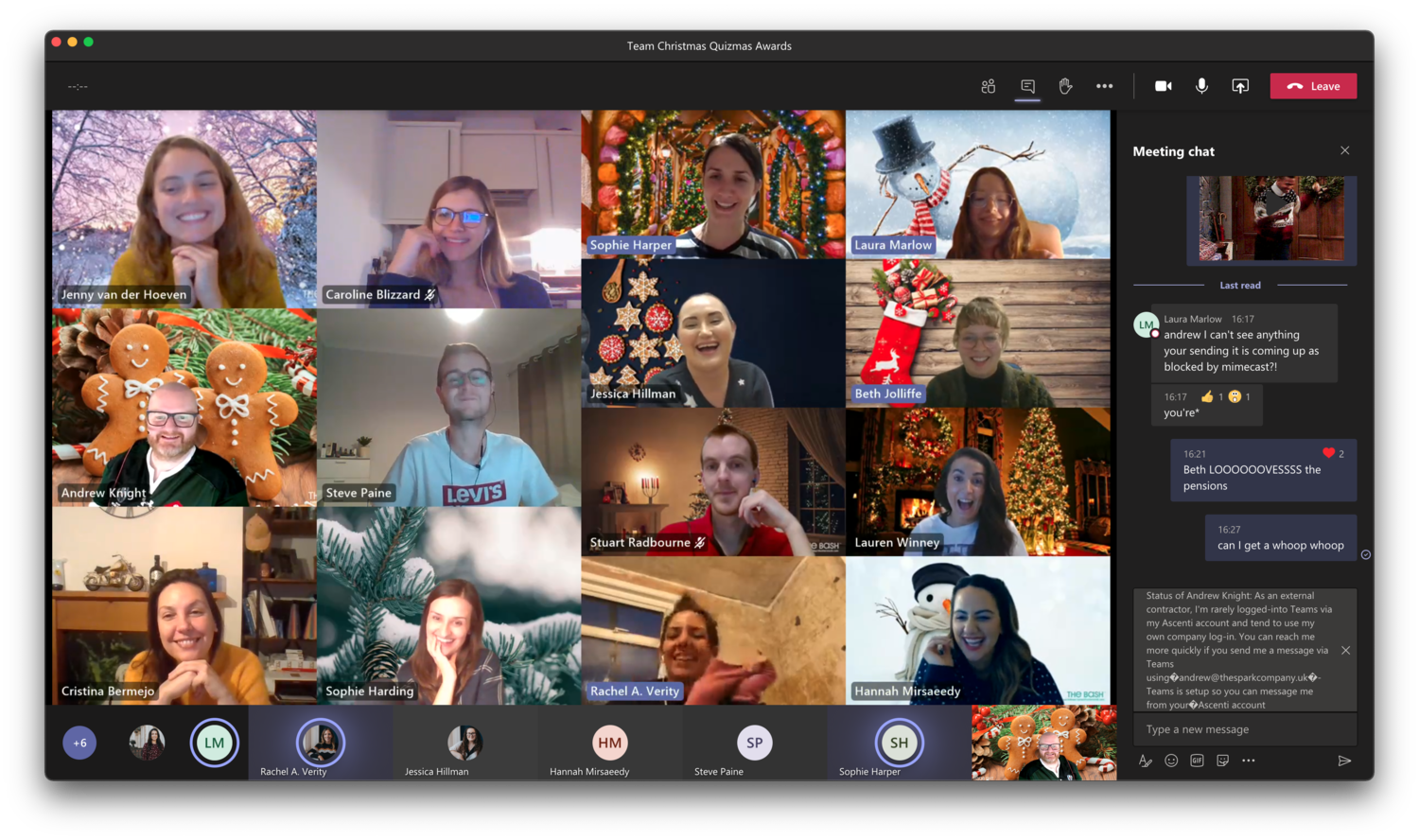
Looking for an interim HR Director that can hit the ground running?
Do you need short-term cover for a HR Director or People Director role? Tried recruiting and still can't find a Head of HR or Head of People? If you are looking for a HR Consultancy to take the pressure off you and temporarily manage your HR function, then you need to speak to us.
We're ready to step in, give you interim strategic HR support, and get stuff done…until you make a permanent hire.
Build a pandemic-proof business in 2021
The coronavirus pandemic has affected us all in ways we’d have struggled to imagine when 2020 rolled around. If you run a business that has shifted from a face-to-face business model to a blended or virtual offering, the challenges and opportunities you face could leave you feeling all sorts of things: nervous, overwhelmed, uncertain and exhausted, to name just a few.

Now that we’re almost a year into the pandemic, it’s worth considering what the future of your business will look like on the other side of lockdown. If you’re not sure where to start, a HR consultant can help you to reengage with your team, identify the people challenges your business may face in the ‘new normal’ and develop your workforce to make the most of growth and development opportunities.
From leading teams remotely to keeping sight of your long-term business vision, here are some of the ways I’ve helped companies and individuals adapt and succeed during the pandemic.
Let your team hear your voice and see your face
Senior teams should be empowered to lead on operational matters and day-to-day issues. Try to create space and time for your team to look after your customers and to take ownership of their projects. This will release your time to focus on strategic matters, whether it’s the marketing plan for a post-vaccinated world or a new treasury strategy to take advantage of record-low interest rates.
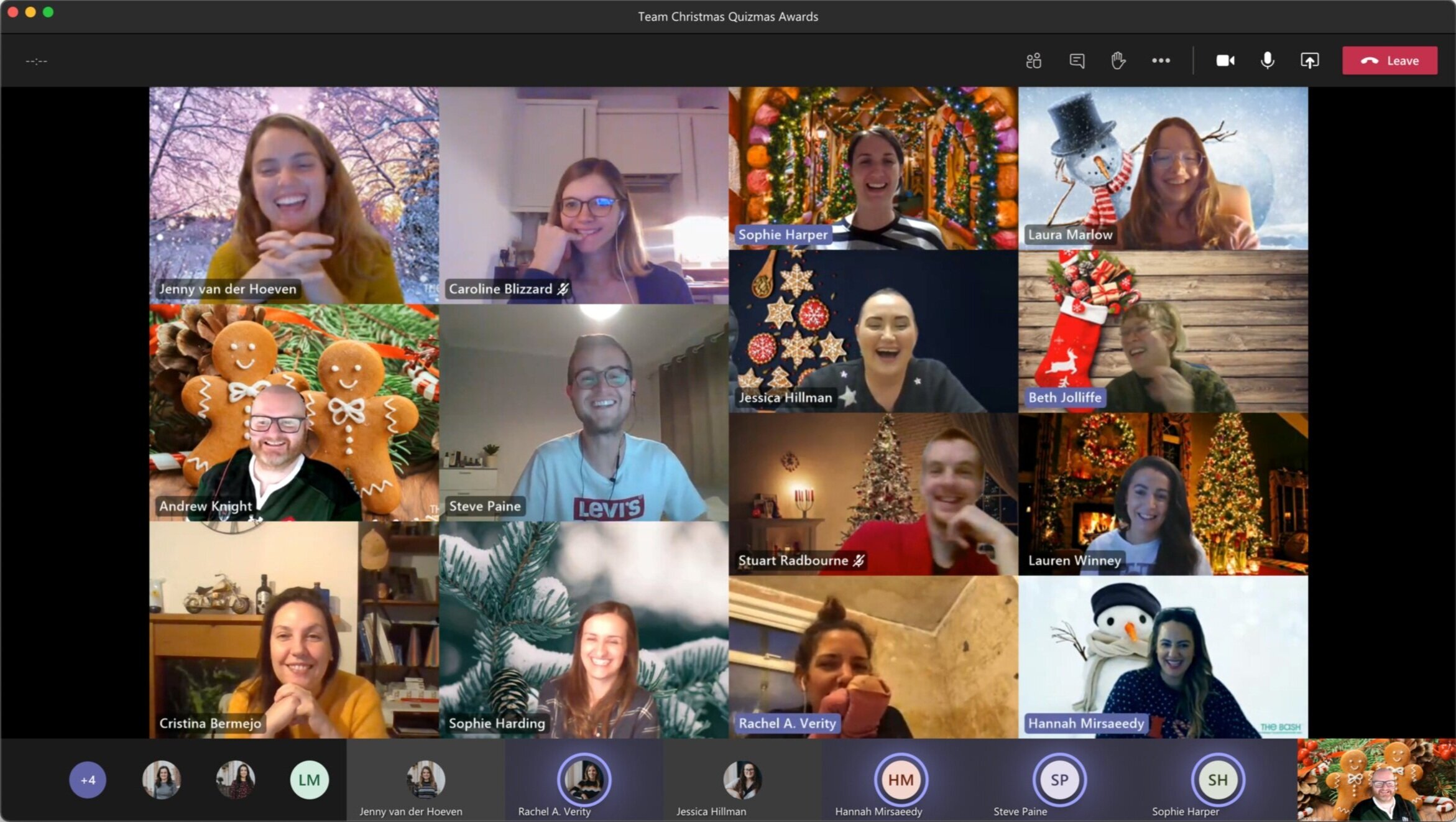
Virtual leadership in the age of COVID-19
Leading a team remotely feels very different to managing a group of people in an office. Yet the core principles remain the same: to keep communication clear and open, inspire trust and get the best from the people you work with.
Keep information flowing and regularly share feedback
- It’s more important than ever to talk to your team regularly about how the business is performing. Involving colleagues in this process (for example, by asking what customers have been saying or encouraging individuals to explain what’s working well for them) can result in a more collaborative conversation where people feel valued and inspired to do well on behalf of the team.

Rebuilding with vision
What should leaders be focused on as they rebuild their businesses following the pandemic? The most important thing is to stick to your core values: making decisions, taking action and behaving in a way that reflects the ethos and character of your company.
Empower others and create space for yourself
- It’s more important than ever to talk to your team regularly about how the business is performing. Involving colleagues in this process (for example, by asking what customers have been saying or encouraging individuals to explain what’s working well for them) can result in a more collaborative conversation where people feel valued and inspired to do well on behalf of the team.
Stay focussed on your long term plans
- As well as keeping up momentum in the short term, it’s important to stay focused on long-term plans. You may need to recalibrate (and that’s OK) but don’t lose sight of your vision. Don’t forget to keep talking about it: clearly communicating your vision and plans to your team while engaging them in your COVID recovery plans will show clear and reassuring leadership as everyone recovers from the crisis.
Champion safety and wellbeing at work
- Above all, prioritise the safety and wellbeing of your workforce, your customers, your partners and stakeholders. People will always remember how you made them feel – you want that feeling to be safe, positive and reassuring.

Supporting your business through organisational change
- Economic and societal change are two of the big drivers for organisational change. COVID-19 has triggered both, making now an ideal time to consider how your organisation can adapt to meet the challenges and embrace the opportunities of 2021 and beyond.
- Working with an organisational change consultant will help to ensure that you make the most of the process. I’m passionate about helping my clients to optimise their organisations and meet whatever challenges come their way; getting to know the specific challenges your business is facing before coming up with smart, long-lasting solutions that are tailored to your company.
Don’t know where to start when it comes to supporting your team through the Cost of Living Crisis?
We are passionate about finding ways to help bosses do the best they can to look after their people.
Some of what we’ve outlined here is simple, but implementing activity that’s targeted to help those that need it most often gets businesses in a pickle. Primarily because they get bogged down about treating all employees the same.
If you need help to work how to support those that need it in a way that’s fair and legal, then please drop us a line. We’d be happy to talk to you.
HR myths busted: “You only see HR when someone’s about to be hired or fired”
“Want to experience real power? Walk along the shop floor with a file and clipboard. It’s the signal that a termination is about to happen.”

So then, what else does HR do?
- Much of what HR teams do is invisible to the majority of people within a company. We take for granted that when we apply to join an organisation, there will be a careers portal and online application process. Similarly, when we are offered a job, we expect to be sent a contract and a set of instructions for our first day. It’s usually someone in HR who makes those things happen.
- We also take for granted that our workplace will be safe and not contribute negatively to our health, wellbeing and performance. Again, someone in HR had a hand in how the workplace was designed and how wellbeing is supported at work.
- Many employees only see HR when there’s bad news to be delivered, or when a challenging conversation needs to take place. The truth is that HR teams work constantly to help everyone be at their best.
When you’re being considered for a role
- HR is the custodian of fairness, equality and inclusion in any business. This means that they’ll put systems and processes in place to make sure that you’re not discriminated against. You may not see them at any point during the selection process, but if you’re treated with dignity and respect, we’ve done our job right.
When you’re on a course or training session at work
- HR includes Learning & Development, a team of professionals whose sole purpose is to improve your knowledge, skills, qualifications and understanding, so that you can take your career where you want it to go.
When you’ve been given a bonus, incentive or reward
- HR might not be there when you get the news, but reward and recognition are a key part of any positive organisational culture. It’s HR’s job to make that happen.
When you’re being promoted or moved into a new role
- HR makes sure that this process is fair and equitable. They’ll update the legal documents and contracts so that you’ve got what you need, they’ll instruct payroll to increase your pay (if that’s part of the job change), and they’ll support your manager to provide any additional training or resources you need in your new role.

How can managers and leaders get more from their HR teams?
- Firstly, don’t see your HR team as a blocker to getting things done at work. They’re not there to tell you what you can’t do; rather, HR teams are chomping at the bit to help you do what you want to do.
- Proactive HR teams want to partner with you, understand your business and enable your people to give their best. Of course, there are times when we need to tell managers why something can’t be done for either a legal or regulatory reason, but this isn’t a negative thing: it’s preventing you from wasting your time and effort on activities that don’t stack up.
- Secondly, keep a regular and open dialogue with your HR Team – it’s a two-way street. HR practitioners have access to lots of tools, information and ideas that can really help you and your business to fly.
- Work with your HR Team on your strategic plan. We can help you with better (and often streamlined) ways to set up your teams, set performance expectations, reward and recognise good performance, deal with challenging issues and help build a positive culture at work.
In short, by treating your HR team as a business partner and not a barrier, you’ll get a ton of value back in return.
Don’t know where to start when it comes to supporting your team through the Cost of Living Crisis?
We are passionate about finding ways to help bosses do the best they can to look after their people.
Some of what we’ve outlined here is simple, but implementing activity that’s targeted to help those that need it most often gets businesses in a pickle. Primarily because they get bogged down about treating all employees the same.
If you need help to work how to support those that need it in a way that’s fair and legal, then please drop us a line. We’d be happy to talk to you.
People, not personnel: the evolving role of HR in modern businesses
Imagine a time when offices were filled with cigarette smoke and rows of typists. At the end of the corridor, there’s an office with a big leather chair for the boss. You’re probably thinking of the 1960s and 70s right now, maybe Mad Men (the AMC TV Show) – hopefully not your most recent job at a contact centre!
Somewhere in this imaginary retro office, there’s a personnel department. While they’re responsible for keeping basic admin records about the workforce, the personnel administrators and managers definitely don’t have a seat at the table when it comes to making business-wide decisions.
Now let’s fast-forward to the third decade of the 21st century. Most of us want to forget 2020 – the working from home, the lay-offs, the closures and redundancies, learning how to lead a team remotely while keeping everyone engaged and happy.
The personnel department from yesteryear wouldn’t have been involved in this kind of thing, but luckily we’ve moved on a bit since then. These days we have people teams instead of personnel departments, and they’re here to help your business and its workforce remain productive and satisfied no matter what the future has in store.

People and personnel: what’s the difference?
The term personnel is a bit old hat now, but for a long time it was the foundation for the way that businesses handled issues within their staff. Personnel departments traditionally fulfilled an administrative role, and were limited in their ability to create a positive culture within the workplace.
But workplaces have changed a lot in the last 50 years, from the organisational systems we use to the role of leadership within companies. What used to be the personnel department has evolved to meet the needs of modern businesses: it’s now more common to hear about people teams, who act as partners with your business and help leaders to make decisions that will benefit both businesses and the people who work for them.
People teams use consumer-standard technology to automate low-value admin tasks, which gives them more time to spend with business leaders. Unlike the personnel department heads of years gone by, people directors often have a seat at the top table, guiding leaders and supporting the business to make sustainable decisions. Their teams are involved in a number of key business roles: recruitment and onboarding, designing and evaluating training, developing a strong pipeline of talented workers, and tackling some of the most significant issues your business will ever face (like a global pandemic, for example).

Enabling, not just enforcing
Of course, people teams also have the important role of managing risk in an organisation and ensuring that the legal aspects of employment are dealt with in an ethical and lawful way. Some of the tasks your HR or people team will take care of include:
Pre-employment checks
So you don’t employ anyone inappropriate or in a way that would breach legislation. (This is going to become even more important as the Brexit transition period ends and the UK immigration rules change on 1st January 2021.)
Championing integrity in the workplace
Managing complex grievance, absence and disciplinary matters
So you don’t break the law when it comes to dealing with tricky issues.
Restructuring
The right HR consultant for your business
As you can see, there’s a lot that a dedicated people team or consultant can help your business with. To learn more about the role I play for businesses as an independent HR practitioner, take a look at the services I offer, or get in touch for a friendly chat.
